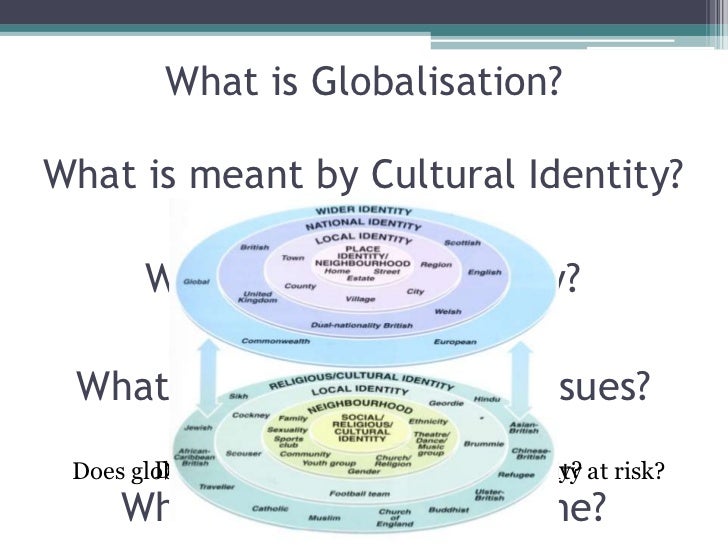Cultural Identity in a Globalized World opens a fascinating dialogue about how our cultural identities are shaped and reshaped in an ever-connected society. As globalization accelerates, the blending of traditions, languages, and practices can either enrich our identities or pose challenges to their authenticity. This exploration delves into how cultural research plays a crucial role in understanding these dynamics and highlights the importance of preserving unique cultural practices while navigating a global landscape.
Through various methods of cultural research, we can uncover the nuances of how identity is formed and transformed by cultural influences. From the impact of media and social networks on perceptions to the delicate balance between cultural appropriation and appreciation, the conversation invites readers to reflect on their connections to culture in a rapidly changing world.
In today’s globalized world, cultural research plays a pivotal role in understanding the diverse tapestries that make up our society. As we become increasingly interconnected through technology and travel, the need to appreciate and respect different cultures has never been more important. This blog post aims to explore the importance of cultural research, highlight some fascinating aspects of various cultures, and discuss how such knowledge can enrich our lives.
### Why Cultural Research Matters
Cultural research involves the study of traditions, customs, languages, and beliefs that define a community. By delving into different cultures, we gain insights into how communities function, how they solve problems, and how they interpret life. Such understanding fosters empathy and respect, essential for peaceful coexistence in our diverse world.
For instance, consider the intricate rituals of the Japanese tea ceremony, or “chanoyu.” This seemingly simple act of making and serving tea is steeped in history and philosophy, emphasizing harmony, respect, purity, and tranquility. By exploring such cultural practices, we can appreciate the values and aesthetics that shape Japanese society.
### Cultural Diversity: A Treasure Trove of Knowledge
Cultural diversity is not just about different foods, languages, or attire; it encompasses a wide range of human experiences and expressions. Here are a few captivating aspects of various cultures that exemplify this diversity:
1. Festivals and Celebrations: Each culture has its own unique celebrations. For instance, Diwali, the Hindu festival of lights, symbolizes the victory of light over darkness and good over evil. This five-day celebration involves lighting oil lamps, feasting, and exchanging gifts. Such festivals are not only significant to their respective cultures but also offer opportunities for cultural exchange and understanding.
2. Culinary Traditions: Food is a universal language, and each culture boasts its own culinary delights. The fusion of flavors in Moroccan cuisine, for example, reflects a blend of Berber, Arab, and Mediterranean influences. Dishes like tagine and couscous tell stories of historical trade routes and cultural interactions. Exploring different cuisines allows us to appreciate the artistry and heritage behind each dish.
3. Art and Music: Art and music are powerful mediums for expressing cultural identity. The vibrant colors of African tribal art or the intricate patterns of Persian carpets can tell stories of history and tradition. Similarly, music, from the rhythmic beats of Afrobeat to the melodious strains of Indian classical music, can evoke emotions and convey messages that transcend language barriers.
4. Languages and Dialects: Language is a crucial element of culture, serving as a vehicle for communication and a repository of history. With over 7,000 languages spoken worldwide, each carries its own unique way of expressing thoughts and emotions. The preservation of endangered languages, such as Navajo or Welsh, is vital for maintaining cultural heritage and identity.
5. Traditional Practices and Beliefs: Many cultures have unique practices that may seem strange to outsiders but are rich in meaning. The Inuit practice of storytelling, known as “iqalluk,” is a vital part of preserving history and passing down knowledge. By understanding these traditions, we can appreciate the wisdom and resilience embedded in them.
### The Challenges of Cultural Research
Despite its importance, cultural research faces several challenges. Cultural appropriation, for instance, poses ethical dilemmas. When elements of one culture are borrowed without understanding or respect, it can lead to exploitation and misrepresentation. Researchers must navigate these sensitive waters carefully, ensuring that they honor the cultures they study.
Moreover, the rapid pace of globalization can threaten the preservation of traditional cultures. As modern influences infiltrate societies, there’s often a dilution of cultural practices. Cultural researchers have a crucial role in documenting and preserving endangered traditions to ensure they are not lost to time.
### How to Engage with Cultural Research
1. Travel with Intent: When visiting new places, approach with an open mind and a desire to learn. Engage with local communities, attend cultural events, and try to understand their way of life. This not only enhances your travel experience but also fosters a deeper connection to the culture.
2. Read Widely: Books and articles on cultural studies can provide valuable insights. Look for works by anthropologists, sociologists, and historians who have dedicated their lives to studying human cultures.
3. Participate in Cultural Events: Many cities host cultural festivals or events that celebrate diversity. Participating in these activities can offer firsthand experience and a deeper appreciation for different traditions.
4. Support Local Artisans: Purchasing handcrafted goods from local artisans promotes cultural heritage and supports the economy. It’s also an opportunity to learn about the significance of various art forms.
5. Engage in Discussions: Join forums or groups that focus on cultural discussions. Exchanging ideas and perspectives can broaden your understanding and appreciation of various cultures.
### Conclusion
Cultural research is not merely an academic pursuit; it is a journey towards understanding ourselves and the world around us. By embracing the richness of cultural diversity, we can build bridges of understanding and create a more harmonious society. As we continue to explore and appreciate different cultures, let us do so with respect, curiosity, and an open heart. Together, we can celebrate the beautiful mosaic of humanity that exists on this planet.
FAQ Section: Cultural Identity In A Globalized World
What is cultural identity?
Cultural identity refers to the identity of a group or culture, influenced by factors such as language, customs, traditions, and values.
How does globalization affect cultural identity?
Globalization can lead to the blending of cultures, causing shifts in cultural identity, which can be both enriching and challenging.

What is cultural appropriation?
Cultural appropriation is the adoption of elements from one culture by members of another culture, often without permission and in a way that can be disrespectful.
What role does media play in cultural identity?
Media influences cultural identity by shaping perceptions, spreading cultural practices, and facilitating cultural exchange through various platforms.

Why is it important to preserve cultural practices?
Preserving cultural practices helps maintain cultural heritage, supports community identity, and fosters a sense of belonging among individuals.
Tinggalkan Balasan